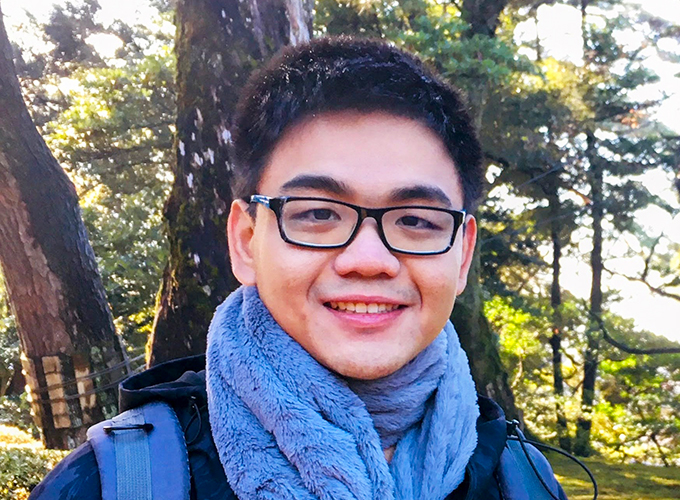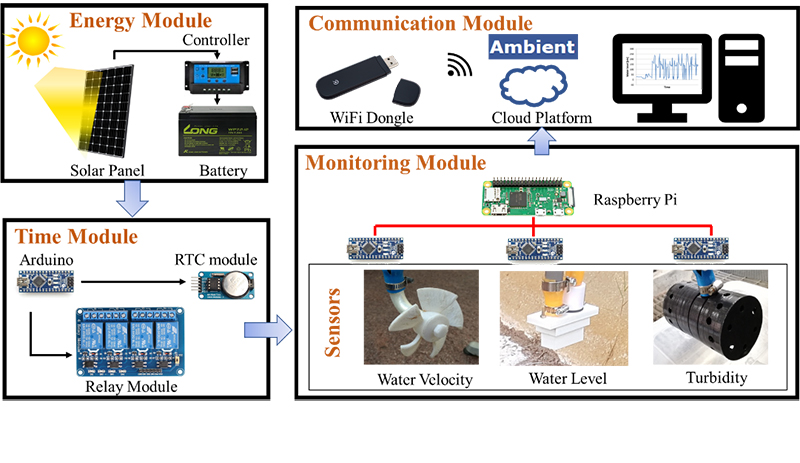Yong Jie Wong
Junior Associate Professor, B.Eng. in Chemical Engineering, M.Eng. and Ph.D. in Environmental Engineering
- wong.yongjie

- Areas of Research
- Machine Learning, Statistical Analysis, Geographic Information Science, Climate Change, Hydrological Modelling
- Profile
- Research
-
Yong Jie Wong obtained his B.Eng. in Chemical Engineering from University Malaya, Malaysia in 2017. Shortly afterwards, he moved to Japan and pursued his M.Eng. and Ph.D. in Environmental Engineering from Kyoto University, in 2019 and 2022, respectively under Monbukagakusho Scholarship (MEXT).
His research interest has been focusing on the application and integration of A.I, GIS, and remote sensing, associated with the 3D-printed IoT system, for disaster prevention and environmental monitoring by considering both social and engineering aspects, particularly in Southeast Asia region. Understanding the vulnerability of this region to the impacts of climate and land-use change, he is dedicated to contributing toward disaster preparedness planning and post-disaster management. In recognition of his scientific contribution, he was awarded the Sasakawa Research Grant in 2020 for his research project, titled: “Toward IR4.0: Development, Validation and Application of IoT-based 3D printed Water Quality Monitoring System” in 2020, and bronze prize in Circular Agricultural Innovation Challenge 2022 by Youth Southeast Asian Leaders Initiative and East-West Center.
At present, Dr. Wong is serving as the Associate Editor for Water, Air and Soil Pollution (Springer), Guest Editor for Water (MDPI), and Editorial Member for American Journal of Agricultural and Biological Sciences (Science Publications) and Public Health Toxicology (European Publishing). He is also an active reviewer for more than 10 reputable journals, with more than 20 high-impact factor papers in his field.
Additionally, Dr. Wong has been delivering talks on application of AI, GIS and 3D printing technology for environmental management to universities in Southeast Asia, including University Malaya (Malaysia), Mahidol University (Thailand), Van Lang University (Vietnam) and others. To promote academic learning and skills development of high school and university students, he is serving as the judge and trainer of Malaysia Stockholm Junior Water Prize and Committee Member of Japan Young Water Professionals.
In his spare time, Dr. Wong enjoys spending time with his fiancée traveling and exploring historical places around Japan. Yong Jie also enjoys reading fiction and non-fiction books while listening to music.
-
Toward IR 4.0: Development, Validation and Application of IoT-based 3D printed Water Quality Monitoring System
The Fourth Industrial Revolution (IR4.0) has unleashed a technological revolution, resulting in more decentralized, automated and interdependent control. The application of advanced technologies such as artificial intelligence (AI), unmanned vehicles, and the internet of things (IoT) has facilitated networked connections among people, processes, and data, enabling new frontiers of innovation, including environmental monitoring. In recent decades, environmental pollution, particularly in water bodies, has become a pressing concern in Southeast Asia due to urbanization, deforestation, intensive industrialization, and population growth. The World Water Assessment Program reports that untreated wastewater discharge into the environment by middle- and low-income countries ranges from 70% to 90%. Pollutants in aquatic environments affect nearly 1 billion people globally, who lack access to safe drinking water, drawing global attention. High levels of suspended solids and turbidity in waterways are a major concern because they are key indicators of toxins, heavy metals, and organic matter, which can severely harm aquatic environments and human health. However, assessing surface water quality is often impractical, laborious, expensive, and time-consuming, particularly for developing and middle-income countries.
To address this issue, Dr. Wong has developed a low-cost water quality monitoring system (WQMS) to identify both point and non-point sources of pollution in river basins, particularly in Southeast Asia. The proposed WQMS consists of four major components (Fig.1), which are energy source, time module, water quality monitoring module and wireless transmitter platform. The WQMS utilizes solar energy as it is abundant with strong intensity of average daily irradiation in Malaysia. The time module is implemented to routinely booting up and shutting down the WQMS for sampling. Under water quality monitoring module, a turbidimeter, a flowrate device and a rain gauge are designed and printed using a 3D printer. Last but not least, the wireless transmitter platform is set up, allowing the devices to upload the data to the cloud system so that the users can read and analyze the information. The proposed WQMS implemented demonstrates the effective integration of IoT with 3D printing, microcomputers, and low-cost sensors, paving a new path for the development of cost-effective and reliable systems for water quality monitoring.

Fig.1: Architecture of the developed water quality monitoring system